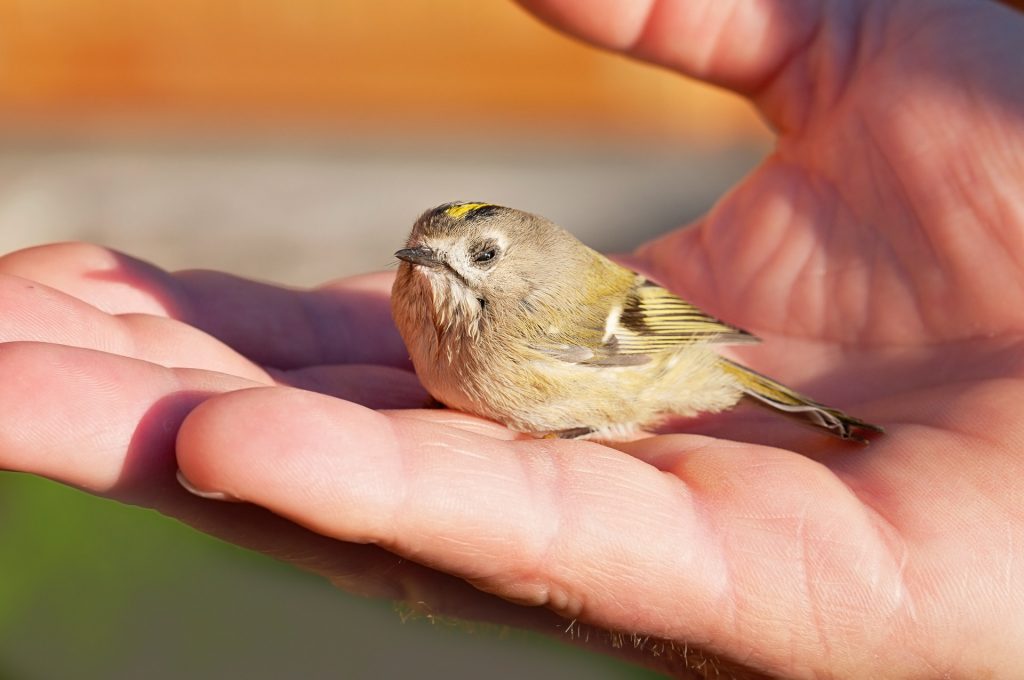
Introduction
Most animal sanctuaries receive daily requests to take in animals in need of humanitarian help. Whilst every animal rescue would probably like to say “yes” to these requests, reality often requires a different response. Every animal sanctuary has limited capacity for responsible care and it’s vitally important to the health and happiness of their current residents and the longevity of the sanctuary to recognize and comply with those limitations. In addition to limited capacity, many animals in need also often fall outside the scope of sanctuaries’ missions. In this resource, we’re going to review some of the different ways you can manage these requests without putting your organization, your staff, and your residents at risk.
When and How to Say “No”
Saying “no” is almost never easy, but there are ways to make it more manageable.
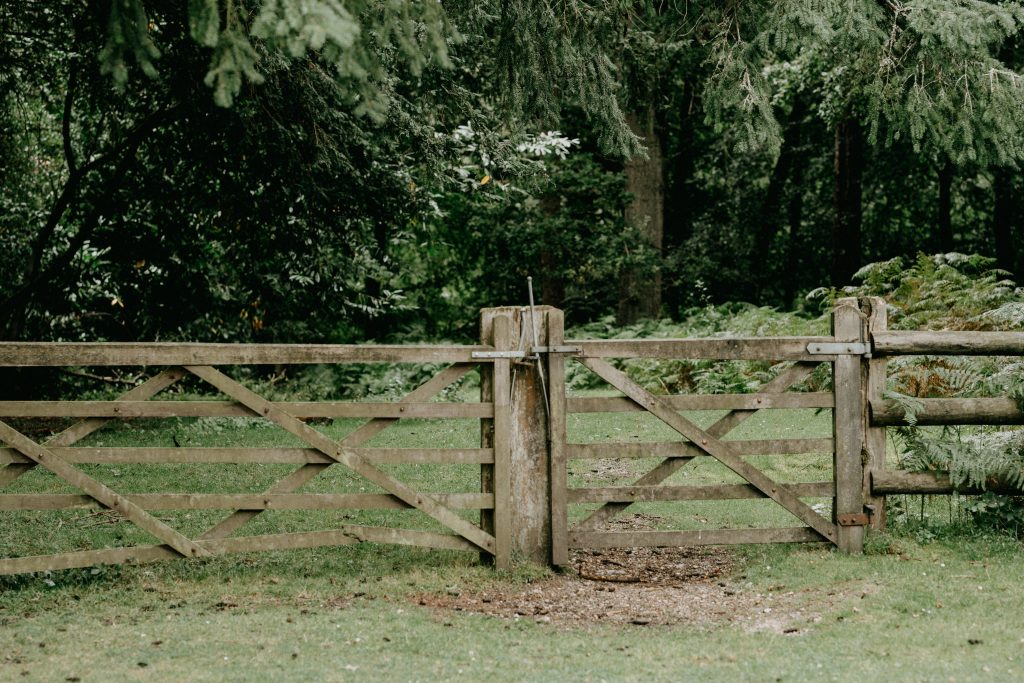
Create an Effective Rescue Policy
Consider creating an effective rescue policy that’s accessible to the public and explains your limitations and criteria for taking in an animal, including the specific species your sanctuary is currently able to responsibly care for.
Learn How to Recognize and Manage Compassion Fatigue and Burnout
Compassion fatigue and burnout are linked to a pervading sense that “you must do everything you can to help another, even if it’s at the expense of your own mental and physical health”. Left unmanaged, they can have deleterious effects on your staff, residents, and organization. There will always be animals in need, but it’s important to recognize that they will not be well-served by an organization that does not take care of itself. Learning how to recognize and manage burnout and compassion fatigue will make it easier to politely say “no”, especially to the more challenging requests for help.
Create a Rescue and Referral Network
Create a rescue and referral network so you can kindly say “no” and lead these requests for help to other animal rescues that do take in that specific species and would be comfortable with people reaching out to them. Having a good relationship with a local companion animal rescue and a wildlife rehabilitator is also very helpful.
Refer Them to The Open Sanctuary Project
You can always refer these requests to The Open Sanctuary Project’s website for information on temporary and/or permanent housing and care for a particular farmed animal species. With the right resources and guidance, there is the possibility that the person or group requesting your help can responsibly provide long-term care for the animal(s) in need.
Biosecurity Risks
Bringing animals that are outside the scope of your mission into your facilities could put your residents and organization at risk. With the current risk of highly pathogenic avian influenza (HPAI), a serious threat to all avian species, it is optimal to quarantine rescues off-site for thirty days, ideally in a home without other birds. However, if you do not have this option, please make sure that you safely observe biosecurity measures to protect your existing avian residents! If you are operating in an HPAI control zone, you absolutely must not bring birds in. If you are unable to follow proper biosecurity measures, saying “no” is vitally important to the safety of your staff and current residents.
Is it Illegal?
Some zoning laws limit the kinds of species your sanctuary can legally care for. Similarly, requests to take in and help wild animals in distress should be considered very carefully. It is a violation of state and federal law for members of the public to hold most species of wild animals in captivity. However, members of the public are permitted to rescue wild animals in distress and house them very temporarily, but they must transfer them as soon as possible to a properly permitted wildlife rehabilitator. It’s important to understand your state and local laws around this and make sure you are meeting all requirements.
Saying “Yes” to Temporary Help and Housing
If you say yes to temporarily housing animals outside your sanctuary’s scope, contact an appropriate animal sanctuary, companion animal shelter, or wildlife rehabilitator immediately.
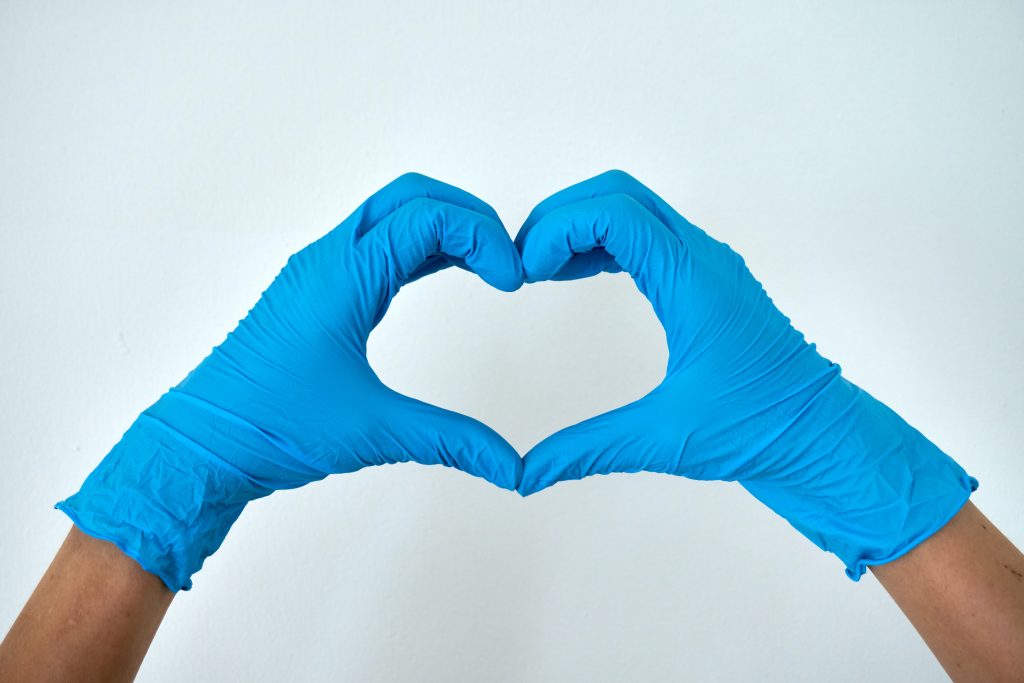
Humane Society of the U.S. “How to Find a Wildlife Rehabilitator”
National Wildlife Rehabilitators Association (NWRA) “Finding a Rehabilitator” or call them at 320-230-9920
The International Wildlife Rehabilitation Council
Contact your local animal control bureau, state wildlife agency, or wildlife rehabilitator
If you cannot get a hold of someone right away, please remember that like you, these folks are extremely busy. Sometimes it can take several hours to receive a call back. In the meantime, try contacting another professional and remain as calm as possible. If the animal in distress is on your property and has not been captured yet, it’s best to wait for detailed guidance from a local professional. Your safety comes first! However, if you must handle an animal in need of immediate assistance, there are some professional tips for temporarily handling different wildlife species below.
If the animal has already been contained, follow proper biosecurity measures. For the safety of your residents and your staff, all incoming animals must be isolated, and strict disinfection and quarantine procedures must be followed. If you decide to take in animals outside the scope of your mission intermittently, keep an isolation area available to keep them away from incumbent and current residents. A fence alone is an insufficient barrier because many diseases are airborne. Anyone who comes into contact with an isolated individual must follow strict protocol. This can include an isolation suit, boots or boot covers, gloves or hand disinfectant, foot bathes, and if there is fear of airborne disease, masks. Please see our resources “Practical Biosecurity Measures for Animal Sanctuaries” and “Establishing Safe and Effective Quarantine and Isolation Protocols for Your Animal Sanctuary” for more in-depth information on this topic.
What to Know While You’re Waiting for a Wildlife Rehabilitator

Help! I Found a Baby Wild Animal
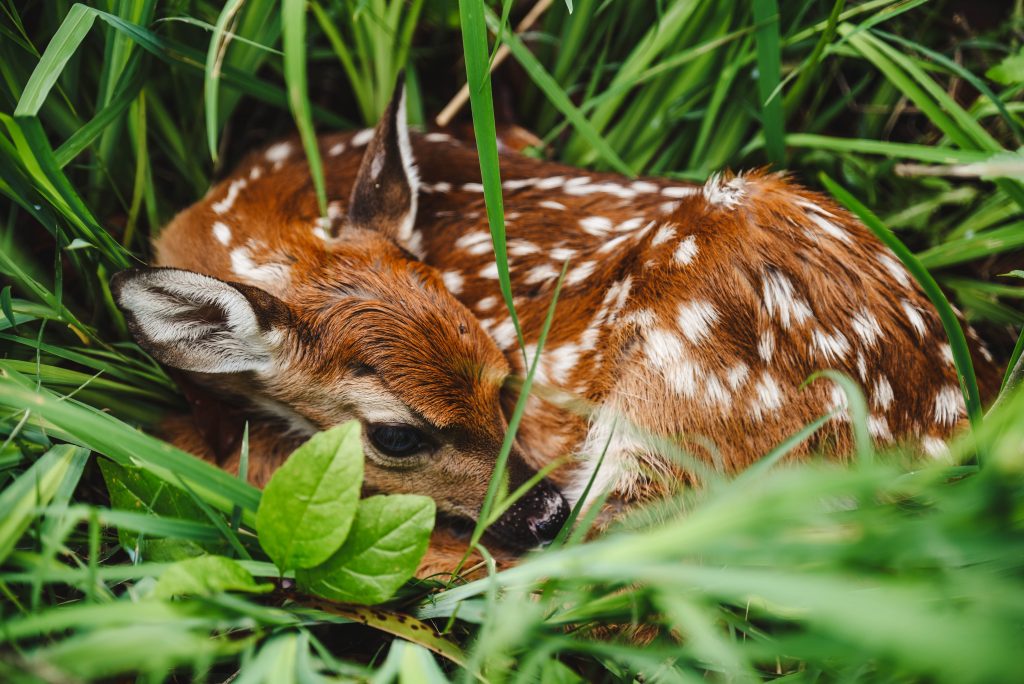
If someone finds a baby wild animal near or on your property that appears to be in distress, you’ll first need to determine whether they really need help. Many baby wild animals that appear to be abandoned or in need of help are simply waiting for their parents to return. Adult wild animals frequently leave their babies in well-hidden spots for hours at a time to forage for food and hide them from potential predators. This is completely normal behavior and in almost all cases, the parents will return. However, if you find a visibly sick or injured baby wild animal or notice that their parents have not returned for over 24 hours, please contact a wildlife rehabilitator right away. Be mindful: When humans handle or move baby wild animals, their parents may not be able to find them when they return.
“I Found a Baby Mammal, Now What?” , National Wildlife Rehabilitators Association
“I Found a Baby Bird, Now What?”, Animal Haven Wild Bird Rehabilitation Center
“Making a Substitute Bird’s Nest”, Louisiana Department of Wildlife and Fisheries
“What to Do if You Find Baby Wildlife”, National Wildlife Federation
“Baby Mammals”, Rideau Valley Wildlife Sanctuary
Help! I Found a Small Wild Bird
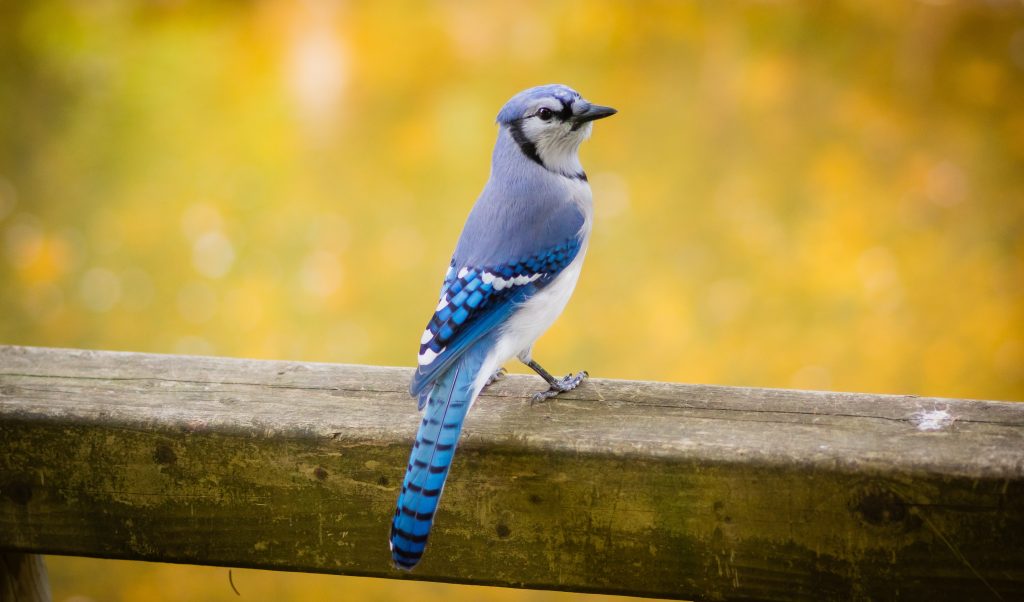
If you find a small injured or sick bird (e.g. songbirds, woodpeckers, hummingbirds, crows, pigeons, jays, etc.) that is not a raptor (e.g. hawk, eagle, falcon, etc.), waterfowl species (e.g. goose, swan), or wading bird (e.g. heron, bittern, egret), prepare a cardboard box, paper bag, or pet carrier with small air holes to put the bird in once they have been rescued. You can spread newspaper or paper towels on the bottom of the carrier, but NOT regular bath towels. Bird claws will get caught in the fabric and they can injure themselves trying to break free. With thin disposable gloves, quietly approach the bird from behind, restrain their wings by holding the bird firmly between your hands, and quickly put them in the carrier. If you have a towel, you can throw it over the bird, carefully restrain their wings, and put them in the carrier. Do not hold or carry the bird by their wings, head, or feet. This can harm them. If you do not have gloves, it’s generally OK to use your bare hands to pick up small birds. Most bird diseases are specific to birds and cannot be transmitted to humans. Birds cannot get rabies! Just be sure to wash your hands thoroughly with soap after you’re done handling them.
Once you’ve contained the bird, put them in a warm, dark, quiet place until a wildlife rehabilitator can take them. Handle the bird as little as possible. Do not disturb them or repeatedly uncover and check on them. No matter how kind you are, the bird sees you as a predator and any human handling is extremely stressful for them. Do not let children or other companion animals near them.
Help! I Found a Raptor

A raptor or bird of prey is a carnivorous bird that has a hooked beak, sharp talons, and keen eyesight (e.g. hawk, eagle, falcon, etc.). If you find an injured raptor, please contact a wildlife rehabilitator right away. Do not attempt to care for them on your own. If you must handle a raptor, prepare a cardboard box that is slightly larger than the bird and cut small air holes near the base of it. You can cover the bottom of the box with a small sheet if you’d like, but do not use a towel, hay, or straw to cover the bottom. The towel will get caught in their talons and the straw and hay can expose the raptor to deadly fungi. Please never use a wire cage to transport or hold an injured raptor in. Wire cages can cause severe damage to their feathers and wings. Wearing long, heavy, preferably Kevlar-lined gloves, you can quietly approach the bird from behind (if possible) and cover their entire head and body with a blanket, towel, or jacket. BE VERY MINDFUL of where their talons are and quickly restrain them. Then, fold and firmly hold their wings against their body into a normal, relaxed position. They should begin to calm down, but your hold should remain firm. Their talons are their main method of protection and they are very sharp and powerful, so carefully place the bird in the box, then take off the towel and secure the lid. Leave the raptor in the box in a warm, dark, quiet place until a wildlife rehabilitator can take them. Do not disturb them or repeatedly uncover and check on them. No matter how kind you are, the bird sees you as a predator and any human handling is extremely stressful for them. Do not let children or other companion animals near them.
Help! I Found a Wild Waterfowl Species, Wading Bird, or Shorebird
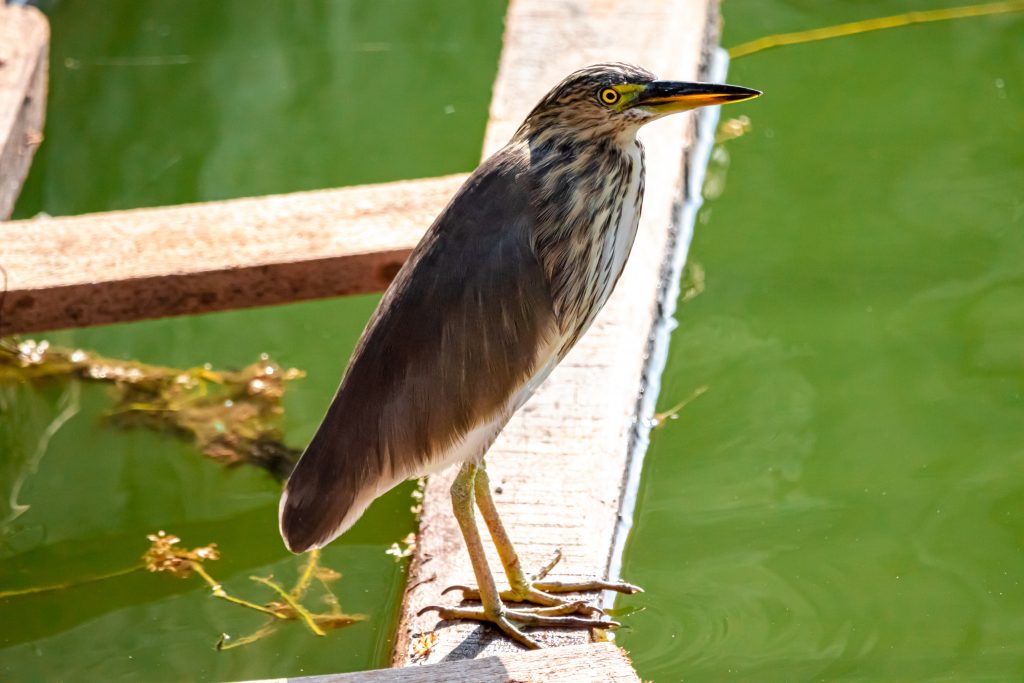
If you find an injured or sick waterfowl species, wading, or shorebird (e.g. wild duck, goose, swan, heron, bittern, loon, gull, etc.), please call a wildlife rehabilitator right away. While ducks may be relatively manageable to capture and hold temporarily, heavier aquatic birds like swans and wading birds with long sharp beaks like bitterns can be VERY dangerous to handle. If you must handle a wading bird that is unresponsive, immobile, or in need of immediate assistance, please prepare and protect yourself first. It is still highly recommended to call a wildlife rehabilitator and wait for their response. It is of utmost importance to protect yourself and call people who are professionally trained to handle wading birds and shorebirds. When dealing with large waterfowl species, wading birds, and shorebirds, you must wear long thick gloves, heavy clothing, and eye goggles to protect yourself from being stabbed. Large waterfowl species like geese and swans are heavy and very strong. Their wings are very powerful and can cause serious damage. Prepare a large crate or box with several small air holes, lined with newspaper or a sheet. Then, quietly approach the bird from behind (if possible) and cover their entire head and body with a blanket, towel, or jacket. If you are dealing with a wading bird or shorebird, BE VERY MINDFUL of where their beaks are and gently, but firmly take hold of their beak with one hand. Then, use your other hand to fold their wings and cradle their body under your arm. They should begin to calm down, but your hold around their beak and body should remain firm. Immediately place them inside the box, quickly take off the towel and secure the lid. Leave the bird in the box in a warm, dark, quiet place until a wildlife rehabilitator can take them. Do not disturb them or repeatedly uncover and check on them. No matter how kind you are, the bird sees you as a predator and any human handling is extremely stressful for them. Do not let children or other companion animals near them.
Help! I Found a Squirrel
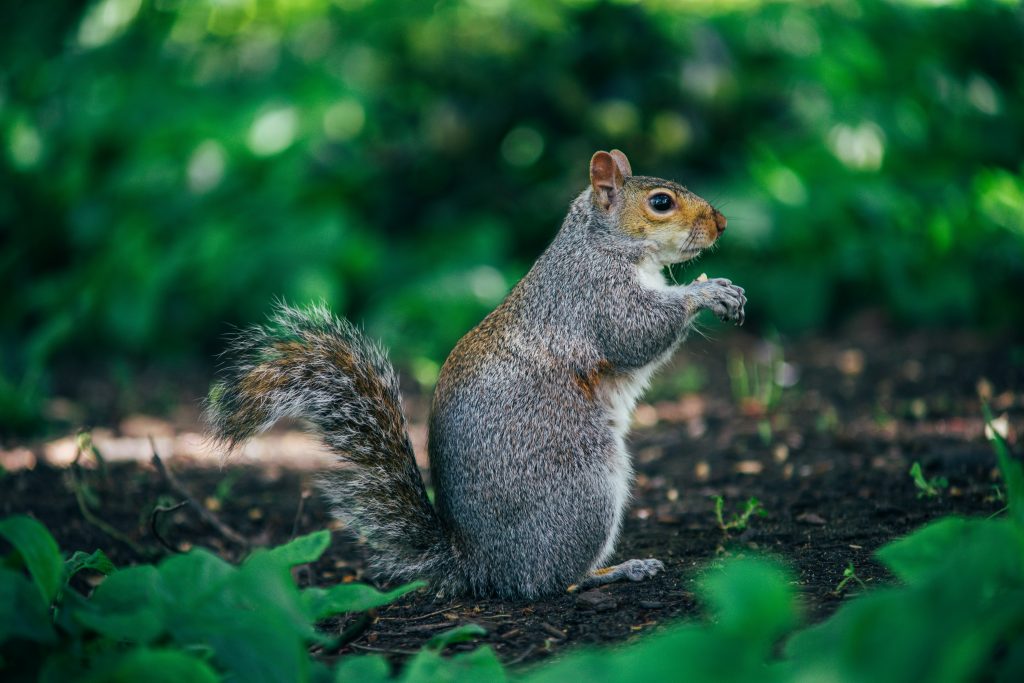
If you find an injured or sick squirrel, please do not try to pick them up with your bare hands. Contact a wildlife rehabilitator right away for guidance. Although they are cute, squirrels have very long, sharp teeth and strong jaws, which they use to bite when they are in a defensive state. If you do not hear back from a wildlife rehabilitator right away, there are a few different ways to contain a squirrel while you wait. It’s safest to try an indirect method first:
The “Scootch” Method
First, prepare a cardboard box or sturdy container and place it on its side near the injured squirrel. Then, use a broom or tree branch to gently nudge the squirrel inside the container. Once they are inside, find a safe way to secure the lid.
If you must handle a squirrel with your hands, it’s best to use Kevlar-lined gloves to keep their teeth from potentially breaking your skin. Squirrel bites are hard enough to break through thinner gloves and injure your hands. Quietly approach the squirrel and throw a plush blanket or soft shirt over top of them. Then, quickly scoop them up and place them in a sturdy container so they are comfortable. Leave the blanket inside the container and the squirrel will have something to snuggle and hide under. Do NOT line the container with a bath towel or paper towels. Squirrels will injure themselves when they get their claws caught in the towel and rip the paper towels to shreds. The box must have air holes and the lid must be secure if there is an active squirrel inside. They can easily jump and push the top off of a box.
Once you’ve contained the squirrel, put them in a warm, dark, quiet place until a wildlife rehabilitator can take them. Handle them as little as possible. Do not disturb them or repeatedly uncover and check on them. No matter how kind you are, the squirrel sees you as a predator and any human handling is extremely stressful for them. Do not let children or other companion animals near them.
Help! I Found a Chipmunk, Mouse, or Rat
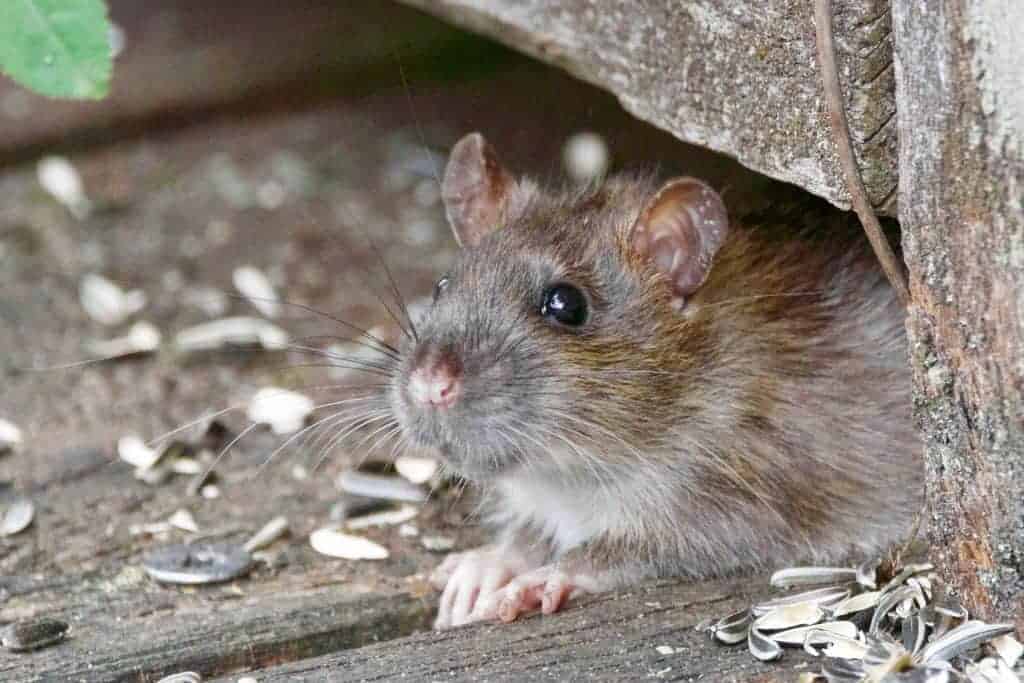
If you find an injured or sick chipmunk, mouse, or rat, please do not try to pick them up with your bare hands. Like squirrels, chipmunks, mice, and rats have very sharp teeth and will bite you when they feel threatened. Call a licensed wildlife rehabilitator right away. If you do not hear back from a wildlife rehabilitator right away, there are a few different ways to contain them while you wait. It’s safest to try an indirect method first:
The “Scootch” Method
First, prepare a cardboard box or other sturdy container and place it on its side near the injured chipmunk, mouse, or rat. Then, use a broom or tree branch to gently nudge them inside the container. Once they are inside, find a safe way to secure the lid.
If you must handle them with your hands, prepare a small container (e.g. cardboard box, shoebox, or pet carrier) with small air holes on the lid and gather a plush blanket or soft shirt and a pair of thick gloves (preferably Kevlar-lined) to wear. Quietly approach the chipmunk, mouse, or rat and throw the blanket or shirt over top of them. Scoop them up and place them in the container as quickly and gently as possible. Leave the blanket inside the container and they will have something to snuggle and hide under. Do NOT line the container with a bath towel or paper towels. They can injure themselves when they get their claws caught in the towel and will rip the paper towels to shreds.
Once you’ve contained them, secure the container’s lid and put them in a warm, dark, quiet place until a wildlife rehabilitator can take them. Handle them as little as possible. Do not disturb them or repeatedly uncover and check on them. No matter how kind you are, chipmunks, mice, and rats see you as a predator and any human handling is extremely stressful for them. Do not let children or other companion animals near them.
Help! I Found an Opossum
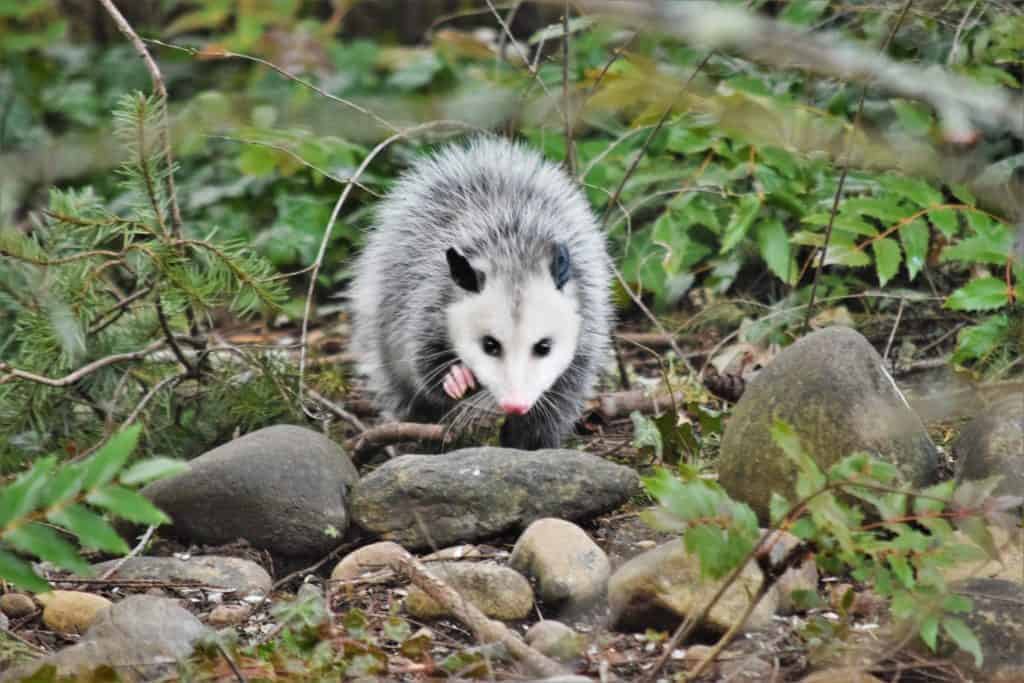
If you find an injured or sick opossum, DO NOT try to pick them up with your bare hands. Though they are usually nonaggressive, opossums can become aggressive when they feel frightened. At the very least, they will probably hiss and excrete a foul-smelling green gel-like substance. Call a licensed wildlife rehabilitator right away. If you must handle an opossum, please consider capturing them using an indirect method first. Feral cat traps work quite well for this and often, folks who do TNR (trap-neuter-release) with feral cats will let you borrow one from them temporarily. If you need to contain an opossum without using a specialty humane trap like a feral cat trap, you can also prepare a container (e.g. cardboard box or pet carrier) with small air holes and try the “scootch” method of capture:
If you must handle an opossum with your hands, make sure to wear a pair of thick gloves. Although opossums are highly resistant to rabies, you don’t want to risk getting bit with your bare hands. Opossums are also carriers of leptospirosis, a bacterial disease that affects humans and other mammals. The disease is transmitted through the urine and feces of an infected animal like an opossum and starts off with flu-like symptoms. If left untreated, leptospirosis will cause kidney damage, meningitis, liver failure, and respiratory complications. To prevent infection, maintain proper biosecurity measures when handling them and use bleach to clean up any of their urine and feces. In addition to wearing gloves, it’s very important to wash your hands with soap and water after handling opossums.
Prepare a cardboard box or other sturdy container and gather a towel or jacket. Quietly approach the opossum and throw the towel over top of them. Pick up the opossum by their body and place them in the container as quickly and gently as possible. Leave the blanket inside so they have something to snuggle and hide under. Secure the lid and put them in a warm, dark, quiet place until a wildlife rehabilitator can take them. Do not disturb them or repeatedly uncover and check on them. Any human handling is extremely stressful for them. Do not let children or other companion animals near them.
Help! I Found a Wild Rabbit

If you find an injured or sick wild rabbit, please contact a wildlife rehabilitator immediately. While you are waiting, you can prepare a cardboard box, shoebox, or pet carrier with small air holes and line it with a clean cloth, soft towel, or newspaper on the bottom. Although wild rabbits are not usually aggressive animals, they will try to defend themselves and are prone to spinal fractures when they are handled by inexperienced people. Cottontail rabbits can also carry the tularemia bacteria, which is transmissible to humans. This bacteria can cause flu-like symptoms, pneumonia, and in severe cases, death. To prevent infection, please wear disposable gloves. With gloves and a soft blanket or towel, quietly approach the rabbit from behind and throw it over their face and body. Carefully pick up the rabbit by the body and quickly place them in the container with the blanket or towel so the rabbit will have something to snuggle and hide under. Seal the container with a lid and place the rabbit in a warm, dark, quiet place away from companion animals and children. Do not disturb them or repeatedly uncover and check on them. Wash your hands and forearms thoroughly with soap and water and wait for further guidance from a licensed wildlife rehabilitator.
Help! I Found a Deer
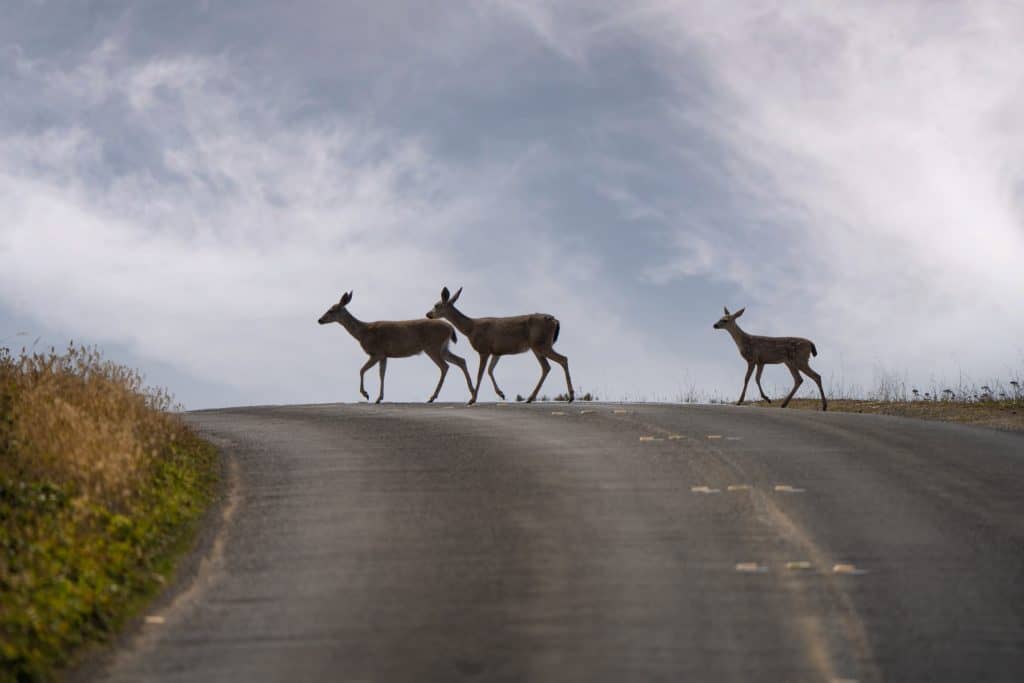
If you find an injured or sick adult deer, please DO NOT try to touch, move, or pick them up. Stay clear of them and call a licensed wildlife rehabilitator who is trained to help deer in distress. Adult deer are incredibly strong and can become very aggressive if they feel threatened. They have the potential to severely injure or kill you. They can also carry several diseases and parasites, many of which are harmful to humans and domesticated animals. If you see an adult deer walking with a broken leg or other injury, it is very possible that they will heal and adapt on their own over time. This is often preferable to the trauma of chase and capture, which is extremely stressful for deer. While you are waiting to hear back from a rehabilitator, please minimize any audio and visual stimuli around the deer and do not chase them.
Help! I Found a Snake
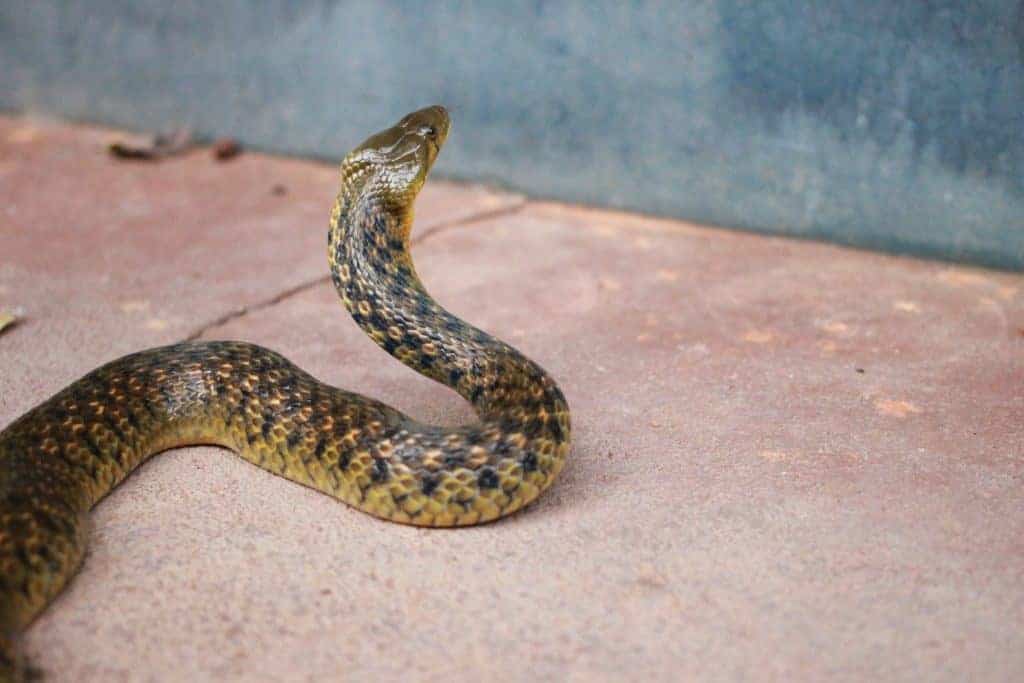
If you find an injured or sick snake, contact a wildlife rehabilitator immediately. Please do not try to pick them up with your bare hands unless you are ABSOLUTELY SURE they are not venomous. Although most snakes are not venomous, there are venomous species in every region. If you are unsure, wait until you hear back from a wildlife rehabilitator for help identifying the snake and further guidance. In the meantime, you can also download the mobile application “SnakeSnap”, which allows you to use photo identification to help identify unknown snakes in your region.
If you have not heard back from a wildlife rehabilitator and you must handle a non-venomous injured snake, there are a few different ways to contain them and keep them safe while you wait. It’s safest to try an indirect method first:
With gloved hands, calmly approach the snake and use a long sturdy object, such as a long tree branch, to distract them away from your reaching hand. Keep the branch low to the ground near the snake’s head. Then, use your free (gloved) hand to take hold of and lift up the snake’s tail and use the branch to lift up the front part of the snake’s body. Quickly place them inside the pillowcase or sturdy container and securely fasten the lid.
Snakes are cold-blooded animals and require a heat source to maintain body temperature. Once you’ve contained the injured snake, it’s important to keep them in a warm, quiet, dark place until you hear back from a wildlife rehabilitator. Do not disturb them or repeatedly uncover and check on them. Do not let children or other companion animals near them.
Help! I Found a Turtle or Tortoise
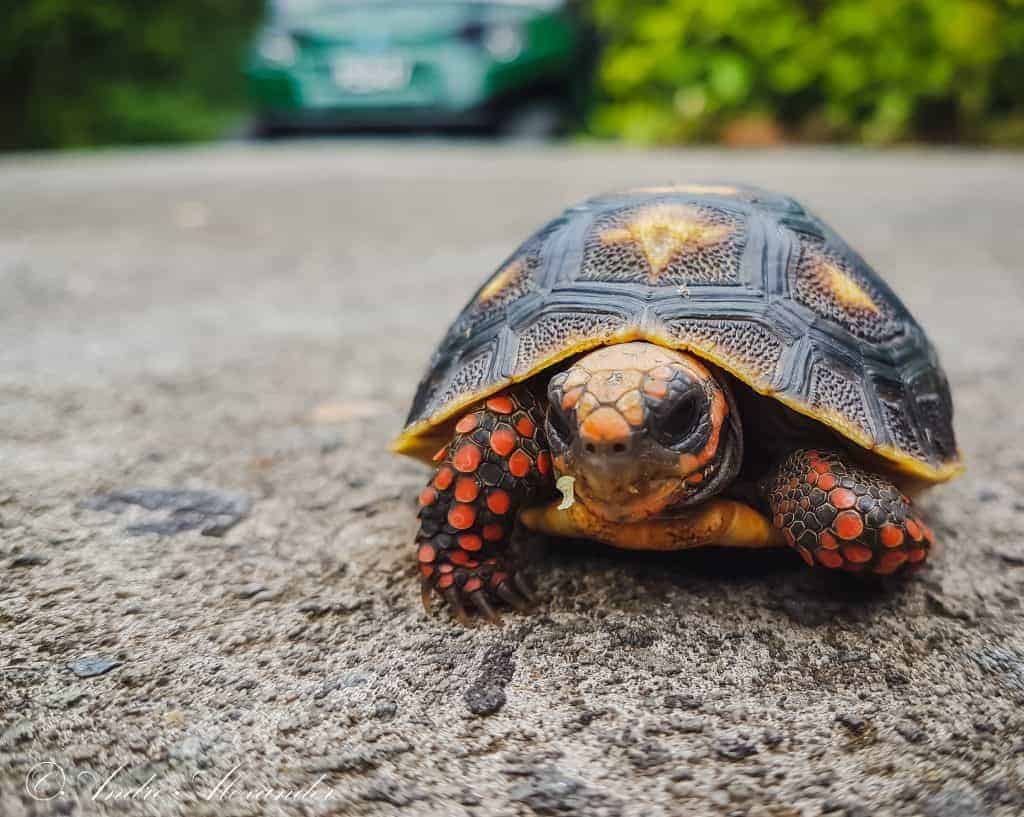
If you find an injured turtle or tortoise, please contact a wildlife rehabilitator immediately. Though most turtles and tortoises can safely be picked up, some are very dangerous, and all turtle and tortoise species have the potential to carry Salmonella. Please exercise caution if you must handle a turtle or tortoise. Wear gloves and always wash your hands with soap and water after handling them.
Tortoises are terrestrial and can die if put into water because they cannot swim. They have large, dome-like shells and stocky, bent legs for walking. They are usually heavier in weight than most turtles.
If you are still unsure, please contact a wildlife rehabilitator and heed their guidance.
The vast majority of injuries sustained by turtles and tortoises are the result of being struck by a vehicle, being bitten by a dog, or getting caught in fishing gear. If you notice that a turtle or tortoise has sustained an injury to their shell, please do not try to manipulate the pieces. Their shell is bone and shell fractures cause them immense pain. In these cases, please contact a wildlife rehabilitator right away and get the turtle or tortoise to a safe place. But first, write down the exact location the turtle or tortoise was found. This is critical to their survival once they are rehabilitated and ready to be released. Then, prepare a secure container with air holes (preferably plastic, metal, or rubber) and a secure lid. It you are dealing with a turtle, you can place a damp towel inside. With gloved hands, gently pick the turtle or tortoise up with one hand on the back of their shell and the other underneath, and place them inside the container. Please be mindful: turtles and tortoises can bite, scratch, and urinate when they feel threatened. It’s best to avoid placing your fingers anywhere near their head. Once you’ve contained them, it’s important to keep them in a warm, quiet, dark place until you hear back from a wildlife rehabilitator. Do not disturb them or repeatedly uncover and check on them. Do not let children or other companion animals near them.
Help! I Found a Frog or Toad
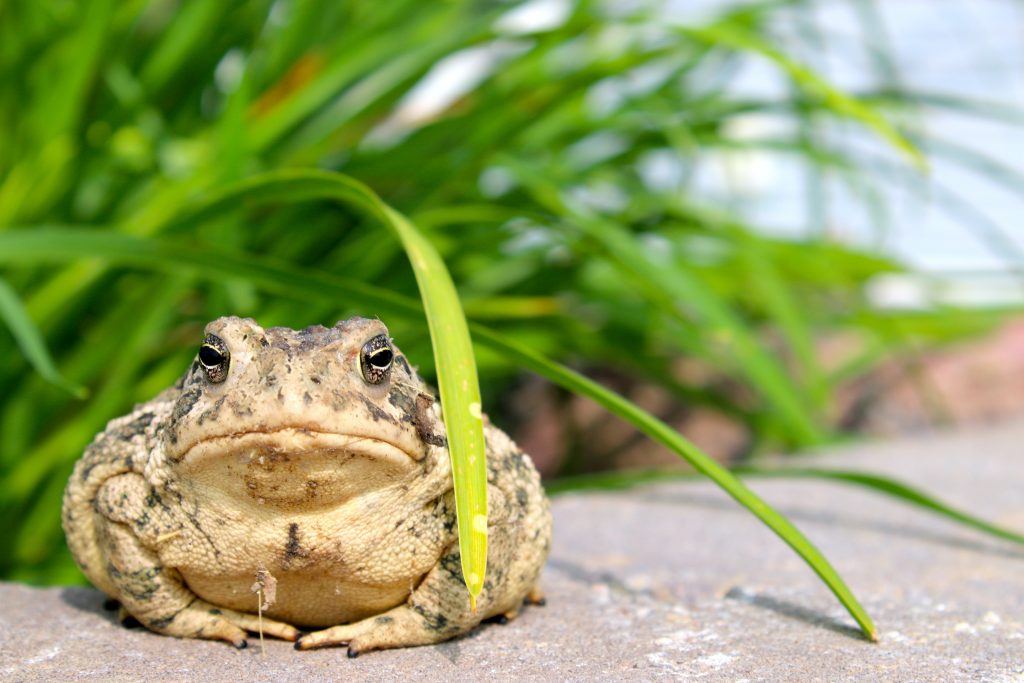
If you find an injured frog or toad, please contact a wildlife rehabilitator immediately. Though it is generally safe to pick up frogs and toads, it is highly recommended that you wear disposable gloves and always wash your hands after handling them. In addition to having the potential to carry Salmonella, frogs and toads secrete toxins through their skin. Toads also have special glands behind their eyes that secrete a milky-white substance when they’re agitated. Though most of the toxins are mild to humans, they can be harmful if they are accidentally ingested. Wearing gloves is also important for the safety of the toads and frogs, as they can absorb harmful chemicals from your hands into their skin.
Though they sometimes get a bad rap, the presence of frogs and toads is actually an indicator of a very healthy ecosystem. They are unable to live in polluted habitats and are very sensitive to changes in their environment, so seeing them on your property is usually a good sign! However, as a general guideline, if you see a frog or toad sitting in an open, sun-exposed spot during the day, there’s a good chance they need medical attention from a wildlife rehabilitator. Frogs and toads often need medical attention because of trauma from vehicle collisions, domesticated animal attacks, chemical burns, or lawnmower accidents.
In most cases, with the right care, frogs and toads have amazing healing capabilities and can recover from injuries fairly well! While you are waiting for a wildlife rehabilitator, you can carefully contain the frog or toad. First, prepare a small plastic container with air holes in the lid and put a clean damp cloth on the bottom. Wearing disposable gloves, gently pick up the frog or toad by their body, place them inside the container, and secure the lid. Please do not pick them up by their head or limbs, as this can injure them. Be mindful that frogs and toads are afraid of humans and will try to hop out of your grip! Once you’ve contained the injured frog or toad, it’s important to keep them in a warm, quiet, dark place until you hear back from a wildlife rehabilitator. Do not disturb them or repeatedly uncover and check on them. Do not let children or other companion animals near them.
Rabies-Vector Species (RVS): Wild Animals that Pose a Higher Risk of Rabies Transmission

If you have found an orphaned, sick or injured raccoon, groundhog, skunk, fox, coyote, or bat that is still alert to your presence and can readily move around, please DO NOT TOUCH THIS ANIMAL with your bare hands. Contact a licensed wildlife rehabilitator immediately. All these species are considered to be rabies-vector species, which means they are the most common wildlife species that transmit rabies to other animals, including humans. Although it is rare in the U.S., rabies is a very dangerous viral disease that is usually spread through the affected animal’s saliva and enters another animal through a break in the skin or contact with the eyes, nose or mouth. From there, it spreads to the nervous system and, in most cases, leads to death. If you have find a wild mammal that is exhibiting abnormal behavior (e.g. walking up to or not exhibiting fear towards humans, circling, seeming unaware of where they are), unfortunately, these behaviors are common signs of rabies.
Help! I Found a Raccoon (RVS)
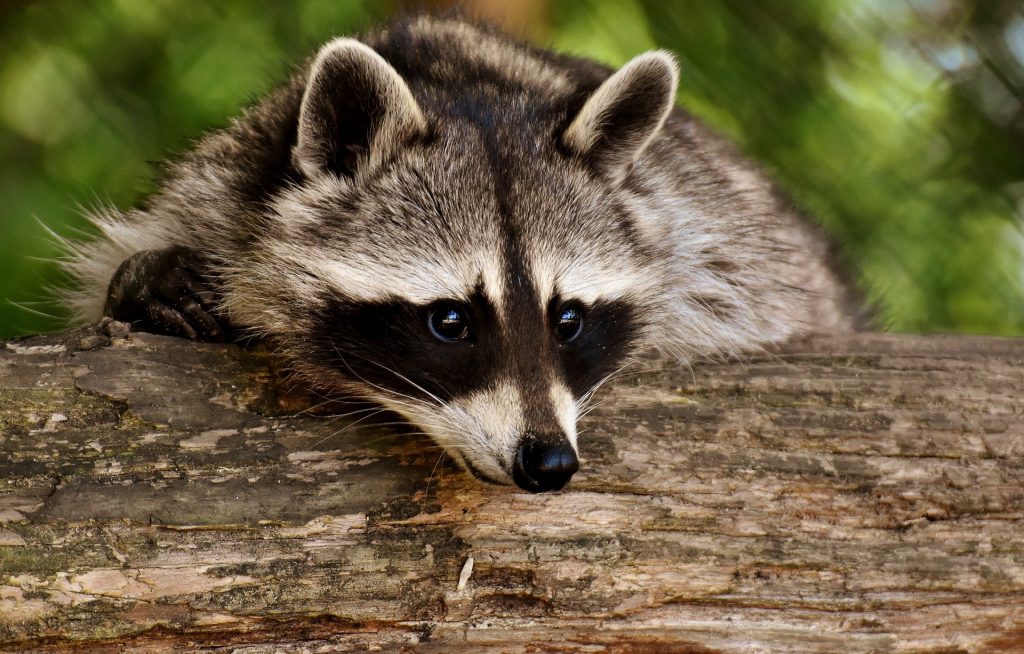
If you find an injured or sick raccoon, please contact a wildlife rehabilitator immediately. Do not attempt to handle, feed, or transport them. Adult raccoons move quickly and can be very aggressive and cause serious injury to humans when they feel threatened. Raccoons are a rabies-vector species and they should only be handled and transported by people who are vaccinated against the rabies virus and licensed wildlife rehabilitators.
If you must handle an injured raccoon that is unresponsive, immobile, or in need of immediate assistance, please prepare and protect yourself first. It is still highly recommended to call a wildlife rehabilitator and wait for their response. It is of utmost importance to protect yourself and call people who are vaccinated against the rabies virus and professionally trained to handle rabies-vector species. When dealing with raccoons, you must wear a thick pair of gloves (Kevlar-lined preferably), thick jacket, and any other available protection that will help prevent injury to your body. Have a large towel and sturdy animal carrier or container with air holes ready to place the raccoon in. Appropriately-sized trash cans, recycling bins, and plastic containers with sealable lids and air holes can also work. Line the container with old soft shirts or blankets. Do not use towels to line the bottom. Raccoons have long sharp nails that can easily get caught in them. First, try the “scootch” method of capture:
If you must handle a raccoon with your hands, carefully approach them from behind and drop the towel over top of their head and body. Quickly gather them in the towel, place them into the container, take off the towel, and securely fasten the lid so they cannot escape. Once you’ve contained them, secure the container’s lid and put them in a warm, dark, quiet place until a wildlife rehabilitator can take them. Handle them as little as possible. Do not disturb them or repeatedly uncover and check on them. No matter how kind you are, any human handling is extremely stressful for them. Do not let children or other companion animals near them.
Help! I Found a Skunk (RVS)
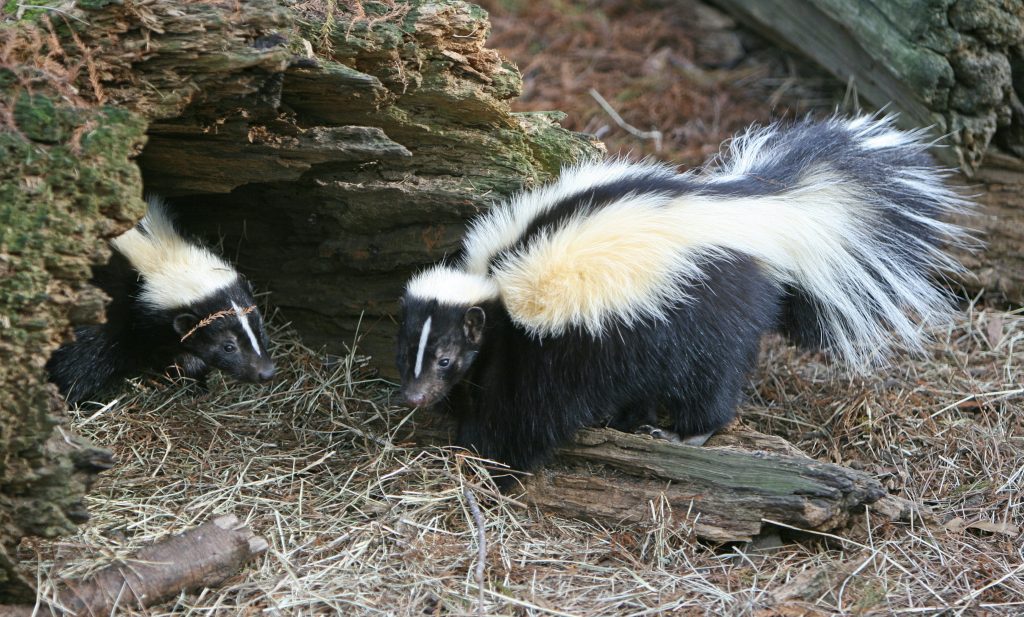
If you find an injured or sick skunk, please contact a wildlife rehabilitator immediately. While not all skunks carry the rabies virus, the skunk family is considered a rabies-vector species and they can carry rabies for a long time before exhibiting any symptoms. Female skunks can also pass the virus on to their babies, so please DO NOT attempt to handle, feed, or transport them on your own. They should only be handled and transported by people who are vaccinated against the rabies virus and licensed wildlife rehabilitators.
If you must handle an injured skunk that is unresponsive, immobile, or in need of immediate assistance, please prepare and protect yourself first. It is still highly recommended to call a wildlife rehabilitator and wait for their response. It is of utmost importance to protect yourself and call people who are vaccinated against the rabies virus and professionally trained to handle rabies-vector species. When dealing with skunks, you must wear a thick pair of gloves (Kevlar-lined preferably), thick jacket, and any other available protective clothing that will help prevent injury to your body. Although they are usually very docile animals, threatened and/or injured adult skunks can move quickly and are very strong. Have a large towel and sturdy animal carrier or container with air holes ready to place the skunk in. Appropriately-sized trash cans, recycling bins, and plastic containers with sealable lids and air holes can also work. Line the container with old soft shirts or blankets. Do not use towels to line the bottom – skunks have claws that can easily get caught in them. First, try the “scootch” method of capture:
If you must handle a skunk with your hands, carefully and slowly approach them from behind and drop the towel over top of their head and body. Quickly gather them in the towel, place them into the container, take off the towel, and securely fasten the lid so they cannot escape. Once you’ve contained them, put them in a warm, dark, quiet place until a wildlife rehabilitator can take them. Handle them as little as possible. Do not disturb them or repeatedly uncover and check on them. No matter how kind you are, any human handling is extremely stressful for them. Do not let children or other companion animals near them.
Help! I Found a Groundhog (RVS)
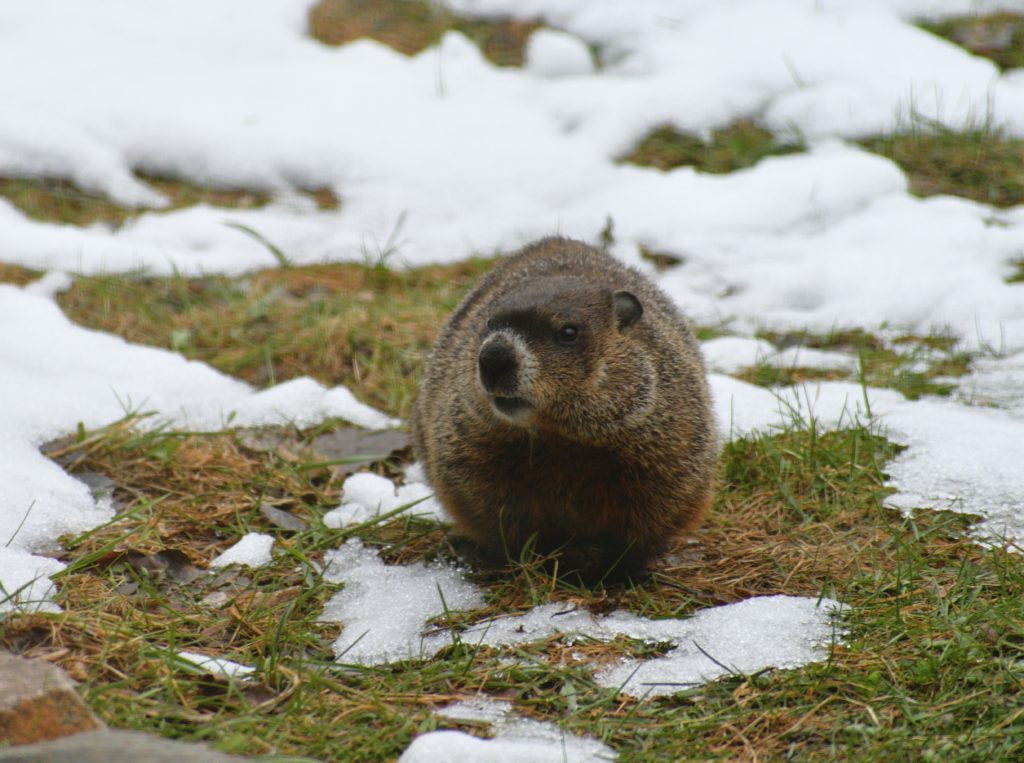
If you find an injured or sick groundhog, please contact a wildlife rehabilitator immediately. Although it is very rare to come across a rabid groundhog, the groundhog family is more susceptible to this disease, so please DO NOT attempt to handle, feed, or transport them on your own. They should only be handled and transported by people who are vaccinated against the rabies virus and licensed wildlife rehabilitators.
If you must handle an injured groundhog that is unresponsive, immobile, or in need of immediate assistance, please prepare and protect yourself first. It is still highly recommended to call a wildlife rehabilitator and wait for their response. It is of utmost importance to protect yourself and call people who are vaccinated against the rabies virus and professionally trained to handle rabies-vector species.
When dealing with groundhogs, you must wear a thick pair of gloves (Kevlar-lined preferably), thick jacket, and any other available protective clothing that will help prevent injury to your body. Although they are usually very timid towards humans, threatened and/or injured adult groundhogs can become aggressive. They have extremely strong jaws and sharp teeth! Have a large towel and sturdy animal carrier or container with air holes ready to place the groundhog in. Appropriately-sized trash cans, recycling bins, and plastic containers with sealable lids and air holes can also work. Anything that is made from cardboard or wood is not recommended for groundhogs. Line the container with old soft shirts or blankets. Do NOT use towels to line the bottom. Groundhogs have claws that can easily get caught in them. First, try the “scootch” method of capture:
If you must handle a groundhog with your hands, carefully approach the groundhog from behind and drop the towel over top of their head and body. Quickly gather them in the towel, place them into the container, take off the towel, and securely fasten the lid so they cannot escape. Once you’ve contained them, put them in a warm, dark, quiet place until a wildlife rehabilitator can take them. Handle them as little as possible. Do not disturb them or repeatedly uncover and check on them. No matter how kind you are, any human handling is extremely stressful for them. Do not let children or other companion animals near them.
Help! I Found a Fox (RVS)

If you find an injured or sick fox, please contact a wildlife rehabilitator immediately. Do not attempt to approach, handle, feed, or transport them. Adult foxes are predators and consider humans to be predators as well. Though foxes are naturally elusive and timid towards humans, they can be very aggressive and cause serious injury if they feel threatened. They should only be handled and transported by people who are vaccinated against the rabies virus and professionally trained and licensed to handle foxes. In addition to being carriers of the rabies virus, foxes are carriers of other harmful diseases and parasites that are transmissible to humans. Please watch over the fox from a distance and be patient as you wait for a wildlife rehabilitator to arrive.
Help! I Found a Coyote (RVS)
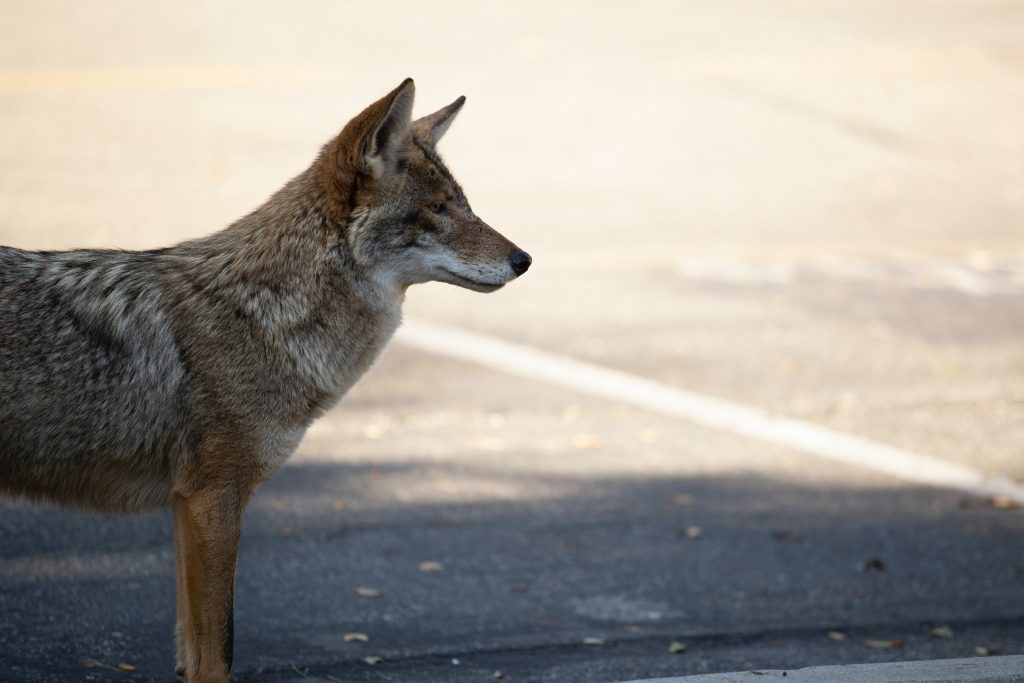
If you find an injured or sick coyote, please contact a wildlife rehabilitator immediately. Do not attempt to approach, handle, feed, or transport them. Adult coyotes are predators and consider humans to be predators as well. Though coyotes are naturally elusive and timid towards humans, they can be very aggressive and cause serious injury if they feel threatened. They should only be handled and transported by people who are vaccinated against the rabies virus and professionally trained and licensed to handle coyotes. In addition to being carriers of the rabies virus, coyotes are carriers of other harmful diseases and parasites like sarcoptic mange and distemper. Please watch over the coyote from a distance and be patient as you wait for a wildlife rehabilitator to arrive.
Help! I Found a Bat (RVS)
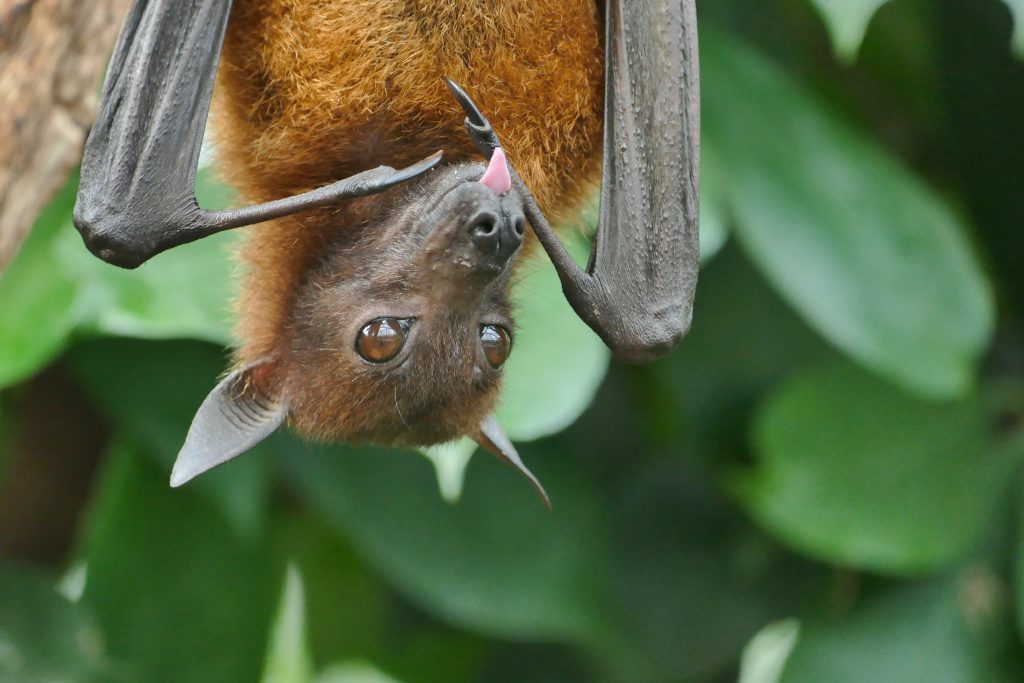
If you find an injured bat, please contact a wildlife rehabilitator immediately. Do not attempt to handle, feed, or transport them. Although less than one half of one percent of bats contract the rabies virus, they are considered to be a higher-risk species and should only be handled and transported by licensed wildlife rehabilitators who are vaccinated against the rabies virus and professionally trained to handle them. If you must handle a bat that is in need of immediate assistance, please prepare and protect yourself first. It is still highly recommended to call a wildlife rehabilitator and wait for their response. It is of utmost importance to protect yourself.
When dealing with bats, there are a few common scenarios you may find them in. Here are the most common scenarios and steps you can take to address them:
If you find a bat that does not or cannot fly away, they are likely suffering from an injury, illness, dehydration, or starvation. If this is the case, please contact an RVS licensed wildlife rehabilitator immediately. If you must handle an injured bat, please protect yourself first and wear a thick pair of gloves, thick jacket, and any other available protection that will help prevent injury to your body. There are a few different ways to contain bats, but it’s safest try an indirect method first:
If you are unable to contain the bat with the “spider” method, you can simply throw a soft cloth over top of their head and body, gently scoop them up, and place them in a small sturdy container (e.g. shoebox, Tupperware, waste can, coffee can) with several small air holes and a tight-fitting lid. Please do not place the bat in a bird cage or container with openings that are wider than a pencil. Bats can find their way out of very tight spots! If you decide to use a cardboard box, please make sure you tape up all the seams so they are tight and secure.
Once you’ve contained the bat, put them in a warm, dark, quiet place until a wildlife rehabilitator can take them. Do not handle or repeatedly disturb them. Do not let children or other companion animals near them.
Help! I Found a Marine Mammal or Sea Turtle
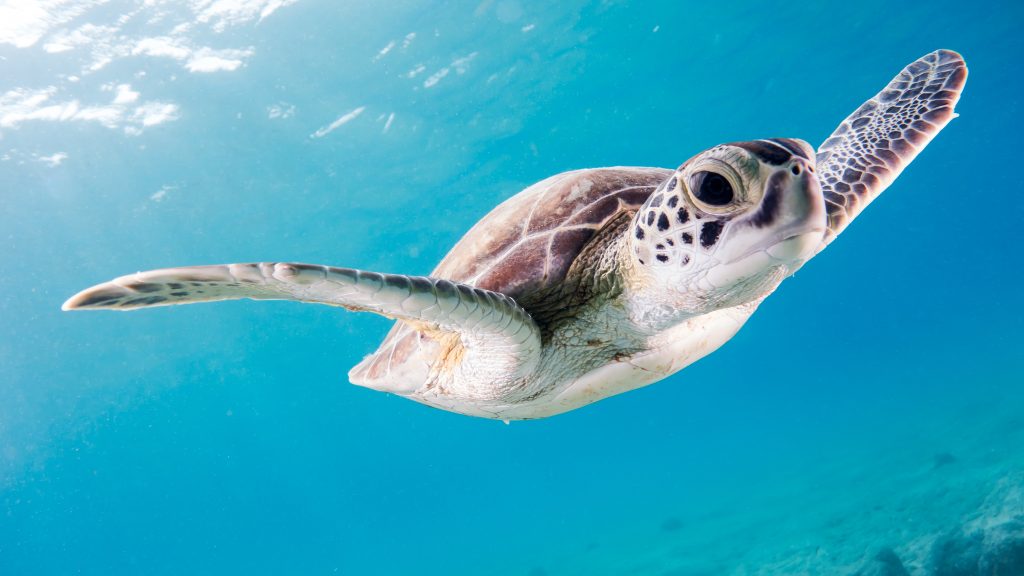
If you see a sick, injured, entangled, stranded, or dead sea turtle or marine mammal, please do not attempt to approach, handle, feed, or transport them. Please report the incident as soon as possible to the National Oceanic and Atmospheric Administration’s Marine Mammal Health and Stranding Response Program (NOAA) and wait for their guidance. When you call, provide as much information as you can, including your name, number, the date, photos, a GPS location of the animal, and the condition of the animal. Sea turtles and marine mammals are protected by state and federal laws like the Endangered Species Act and the Marine Mammal Protection Act. It is illegal to feed, injure, or kill marine mammals and sea turtles. If you see any potential violations, please report it immediately to the NOAA Fisheries Enforcement Hotline at 800.853.1964. You may report violations anonymously.
Important Reminders When You’re Dealing with Wild Animals in Distress

Protect Yourself First! Always Wear Gloves. Disinfection is Essential.
It is of utmost importance that you put your and your sanctuary’s safety first. Call a professionally trained and licensed wildlife rehabilitator to help you handle the situation before you react. Whenever possible, please do not touch wild animals with your bare hands. In addition to carrying potentially transmissible diseases, wild animals also carry ticks, fleas, mites, lice, and other parasites that can harm humans and farmed animals. However, if you must handle them with your bare hands or with gloves, thoroughly wash your hands after. It’s also very important to disinfect every piece of your equipment the wild animal has touched. If you get bitten, scratched, or licked by a wild animal, please seek medical attention immediately.
“Keep Wild, Wild” and Handle Them as Little as Possible
Petting, stroking, singing, or talking to a wild animal can kill them from stress. Keep children, companion animals, farmed animals, crowds, and loud noises away from them. They do not find any of these things comforting. Please remember these are wild animals and it is in their best interest to keep them that way. Habituating them in any way is putting their lives at risk. Whenever possible, the goal in wildlife rehabilitation is always to release them so they can be free.
Do NOT Feed Them
If you find a wild animal in distress, you may feel inclined to give them something to eat. However, providing food to an animal who is dehydrated, starving, or suffering from trauma can cause them serious harm. Their bodies may not be strong enough to digest food, particularly if it is the wrong kind of food, which can quickly cause diarrhea and in the worst cases, death. It’s more important to stabilize the animal first by keeping them warm and calm.
Do NOT Give Them Anything to Drink
It may sound counterintuitive but giving water to a wild animal in distress can also cause them serious harm. Unless you are properly trained to do so, please NEVER try to force-feed water to an animal. The water can end up in their lungs and cause pneumonia and death. Similarly, providing a water-filled bowl to wild animals in distress can put them at risk. If they are having trouble standing or panicking and trying to escape temporary confinement, they can fall into the water bowl and get hypothermia or drown.
Note Where You Found Them
This is vital information for the release of rehabilitated wild animals. Their survivability depends on being returned to their home range!
Wildlife Contact with Cats and Dogs
Cats have mouths that are full of harmful bacteria that can kill wild animals very quickly. If you see a wild animal that has been in the mouth of a cat, please contact a wildlife rehabilitator immediately. Regardless of visible wounds, the wild animal will likely need medication to survive an impending infection. If you see a wild animal that has been in the mouth of a dog, please contact a wildlife rehabilitator immediately. Dogs have powerful jaws that can cause serious injuries.
Do NOT Trap and Relocate Wild Animals
Please remember many wild animals have relatively small home ranges that they depend on for survival. Relocating them is putting their lives at risk. Relocation also severely impacts baby wild animals. Wildlife rehabilitators receive hundreds of baby wild animals in distress each year because their mothers have been needlessly trapped, relocated, and separated from them. If you are uncomfortable with the presence of wild animals near or on your property, please check out our “Compassionate Wildlife Practices at Your Animal Sanctuary” resource for tips on coexisting with them peacefully!
There Are Exceptions to These Guidelines
It is always best to heed the guidance of your local licensed wildlife professionals. For example, if they tell you it is OK to give a wild animal in distress some water, then they have determined in your particular case that it is safe to do so.
Sources
Austin Area Wildlife Rehabilitation, Inc.
Australian Wildlife Rehabilitation Conference
Central Mississippi Turtle Rescue
Maryland Raptor Conservation Center
National Oceanic and Atmospheric Administration
National Wildlife Rehabilitators Association
Rideau Valley Wildlife Sanctuary
Squirrelmender Wildlife Rehabilitation
The Wildlife Center of Virginia
University of Illinois Urbana-Champaign College of Veterinary Medicine Wildlife Medical Clinic